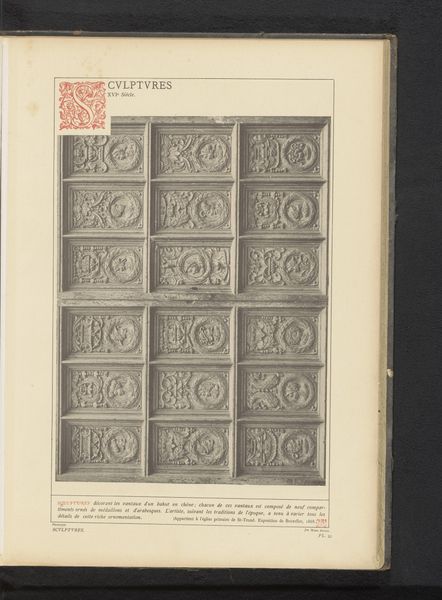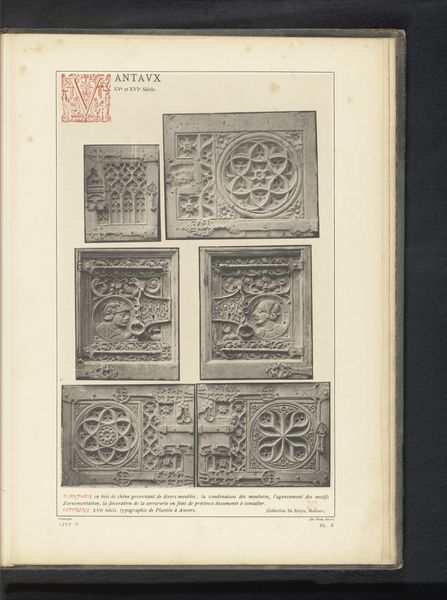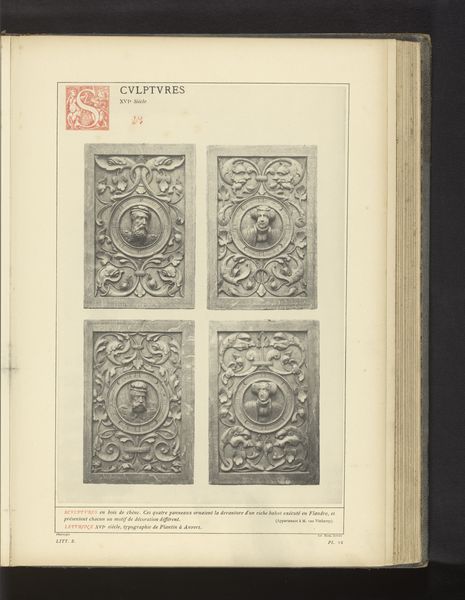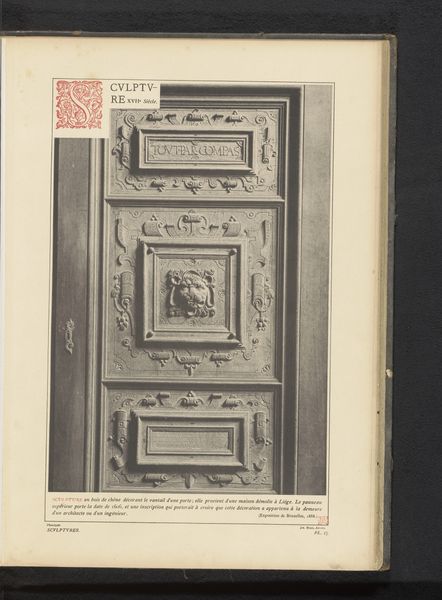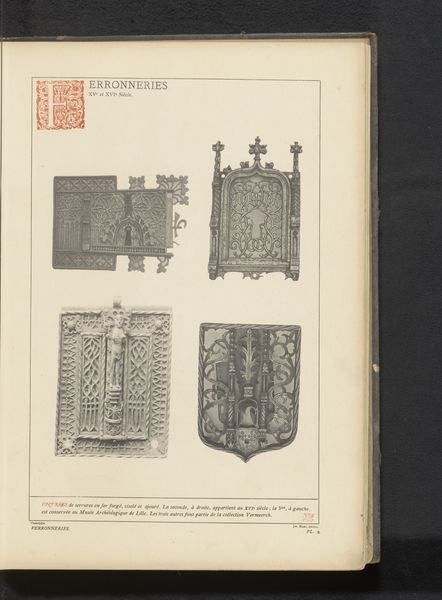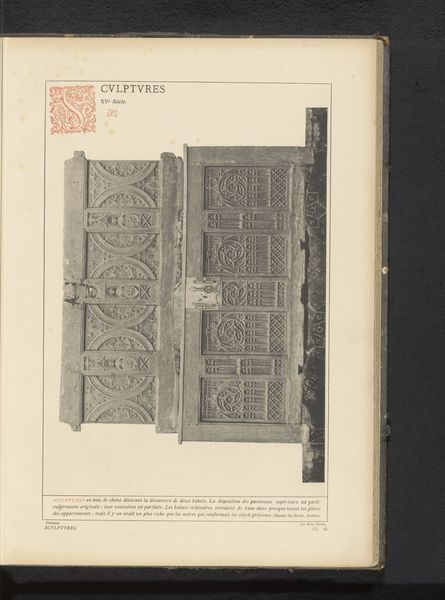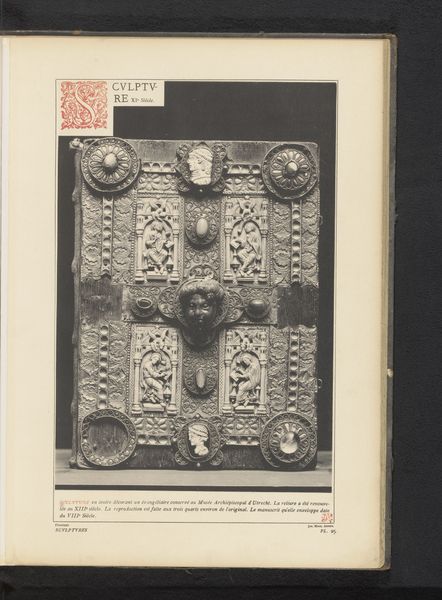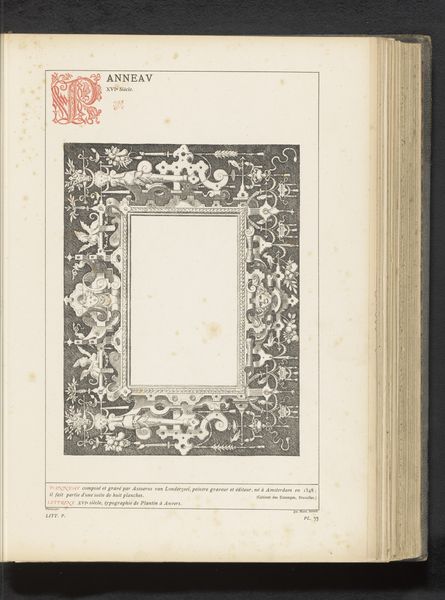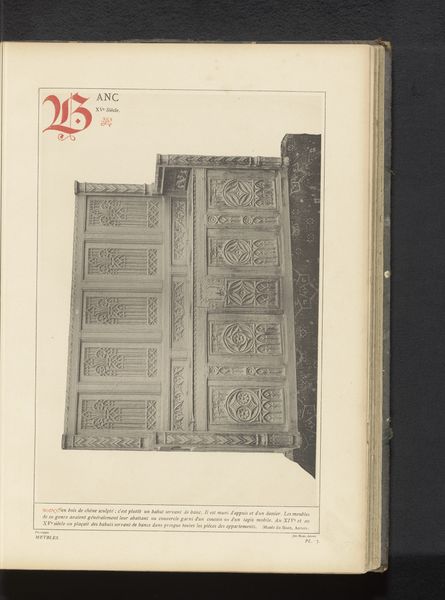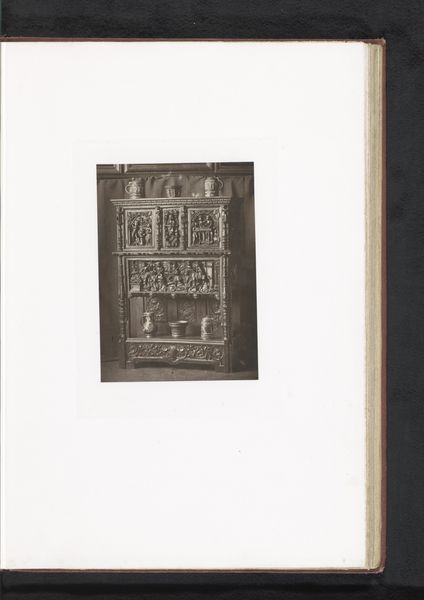
carving, relief, sculpture, wood
#
medieval
#
carving
#
relief
#
sculpture
#
wood
#
decorative-art
Dimensions: height 341 mm, width 235 mm
Copyright: Rijks Museum: Open Domain
Curator: Looking at this image of an Eikenhouten gedecoreerde kast in een kerk te Sint-Truiden, created sometime before 1889, I am immediately drawn to the labor. The sheer dedication required to produce such intricate relief carving from wood is astonishing. Editor: It’s striking isn’t it? There's a sense of power that radiates from this object, rooted, I believe, in the societal structure of religious authority. I am wondering, what was the function of this work, and whom did it serve? Curator: Functionally, as the title tells us, this decorated oak cabinet stood within a church, probably for storing important religious objects, reliquaries, or vestments, and thus central to religious rites and practices. However, more interestingly, the creation of this kind of highly embellished decorative art reveals an investment in conveying both sacred and secular messages. The materiality of the carving in oak signals a robust commitment to power and permanence. Editor: Exactly, this is what I wanted to say. The oak itself, the way it’s worked… the anonymous craftspeople certainly had deep material knowledge, and their skilled hands enacted the symbolic weight that it bears. It underscores the societal importance of craftsmanship in the church. Curator: And those images! In that decorative art, a narrative of faith is told, reflecting perhaps key ideological tenets and serving as a mnemonic for religious history that must be remembered in religious ceremony and life. Editor: We also must account for consumption – the commissioning and display of the sculpture demonstrates that economic resources were dedicated to create a religious narrative. What sociopolitical statements do these consumption patterns reflect? Curator: It certainly positions the Church as a central cultural patron, capable of mobilizing creative resources and projecting specific moral frameworks on how history ought to be received. Its location and its display would control that message. Editor: Looking closely at the production side gives one much to think about. Ultimately, an artwork of such scope speaks to an intricate nexus of artistry, spirituality, economics, and social structures that are interconnected. Curator: Yes, exactly. From its physical creation to its function and placement, it seems it would be possible to understand much of that historic intersectionality through just this object.
Comments
No comments
Be the first to comment and join the conversation on the ultimate creative platform.

